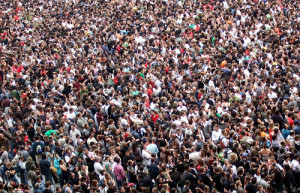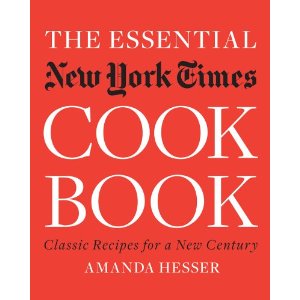 By now, I’m sure you’ve heard about the Cooks Source debacle wherein the magazine’s editor Judith Griggs republished a writer’s article without her permission. Although she has three decades of journalism experience, Griggs seemingly has little working knowledge of copyright law. She believed that she could print the story in her magazine just by making a few edits to the original text of Monica Gaudio’s “A Tale of Two Tarts,” which was published online a few years ago. Griggs also believes, in her own words, that “the web is considered ‘public domain.'”
By now, I’m sure you’ve heard about the Cooks Source debacle wherein the magazine’s editor Judith Griggs republished a writer’s article without her permission. Although she has three decades of journalism experience, Griggs seemingly has little working knowledge of copyright law. She believed that she could print the story in her magazine just by making a few edits to the original text of Monica Gaudio’s “A Tale of Two Tarts,” which was published online a few years ago. Griggs also believes, in her own words, that “the web is considered ‘public domain.'”
 If the Cooks Source disaster is an example of the wrong way to source content from the Internet, Amanda Hesser’s experiences crowdsourcing for her cookbook would be a good example. Six years ago, New York Times food columnist Hesser began compiling recipes from the paper into a cookbook, The Essential New York Times Cookbook. Realizing the daunting task ahead of her, she decided to get some help:
If the Cooks Source disaster is an example of the wrong way to source content from the Internet, Amanda Hesser’s experiences crowdsourcing for her cookbook would be a good example. Six years ago, New York Times food columnist Hesser began compiling recipes from the paper into a cookbook, The Essential New York Times Cookbook. Realizing the daunting task ahead of her, she decided to get some help:
[I]t turned out to be a terrible idea logistically, because The Times has published tens of thousands of recipes. So I turned to the paper’s readers — you! — a group of people I barely knew, for help, placing a small author’s query in the Dining section, soliciting readers’ ‘most stained recipes’ from The Times.
Readers immediately began submitting their recipe choices via snail mail and what Hesser called “a tidal wave of e-mail.” As the project progressed, Hesser and her collaborator Merrill Stubbs developed an online community called food52:
Suddenly there were regular people everywhere who were knowledgeable about food, and there was a new medium through which they could express themselves: blogs.
[…] There were lots of quasi-communities online […] but there was no online platform for gathering talented cooks and curating their recipes. […] We began by focusing on recipes as a starting point and came up with an idea we could package: in 52 weeks, we’d create the first crowd-sourced cookbook.
[…] The Internet’s elimination of geography means molecular-gastronomy enthusiasts can crawl out from behind their immersion circulators and find one another; so can the thousands of cupcake bakers. And its compression of time allows the community to make instant and intense connections.
Hesser also shares a quote from Andrew Rasiej, the founder of Personal Democracy Forum, who told her “Newspapers think they’re just in the information business, but they’re really in the business of community building as well.” That’s true of news organizations in general, not just print media. BreakingNews.com, part of MSNBC’s Digital Network, recently added crowdsourcing features to its site to foster its community.
Users can now submit their tweets, photos, or videos. “It’s not just about what news organizations publish anymore, but it’s also about what people see,” said Cory Bergman, director of product development at MSNBC. Bergman further explains the process in a post on Lost Remote:
Notice we’re not asking users to send us photos/video, but send us links to photos/video. So if someone you’re following on Twitter stumbled across a story, you could send us a link to her tweet. That’s a big philosophical shift for news organizations that historically want people who shot a photo to send it directly to them. But social platforms like Twitter, Facebook and YouTube have become the standard ways that people share breaking news, and you can ‘spot’ news without witnessing it yourself.
Source: “Cooks Source magazine lambasted for stealing writer’s article,” Digital Journal, 11/07/10
Source: “Exclusive: Cooks Source Writer Marvels at the ‘Nerd Rage,’ Keeps Waiting For That Apology,” Time‘s NewsFeed blog, 11/05/10
Source: “Recipe Redux: The Community Cookbook,” The New York Times, 10/06/10
Source: “Crowdsourcing breaking news from social media,” Lost Remote, 11/10/10
Source: “MSNBC Expands @BreakingNews With Social Crowdsourcing and Mobile Apps,” Mashable, 11/10/10
Image by James Cridland, used under its Creative Commons license.